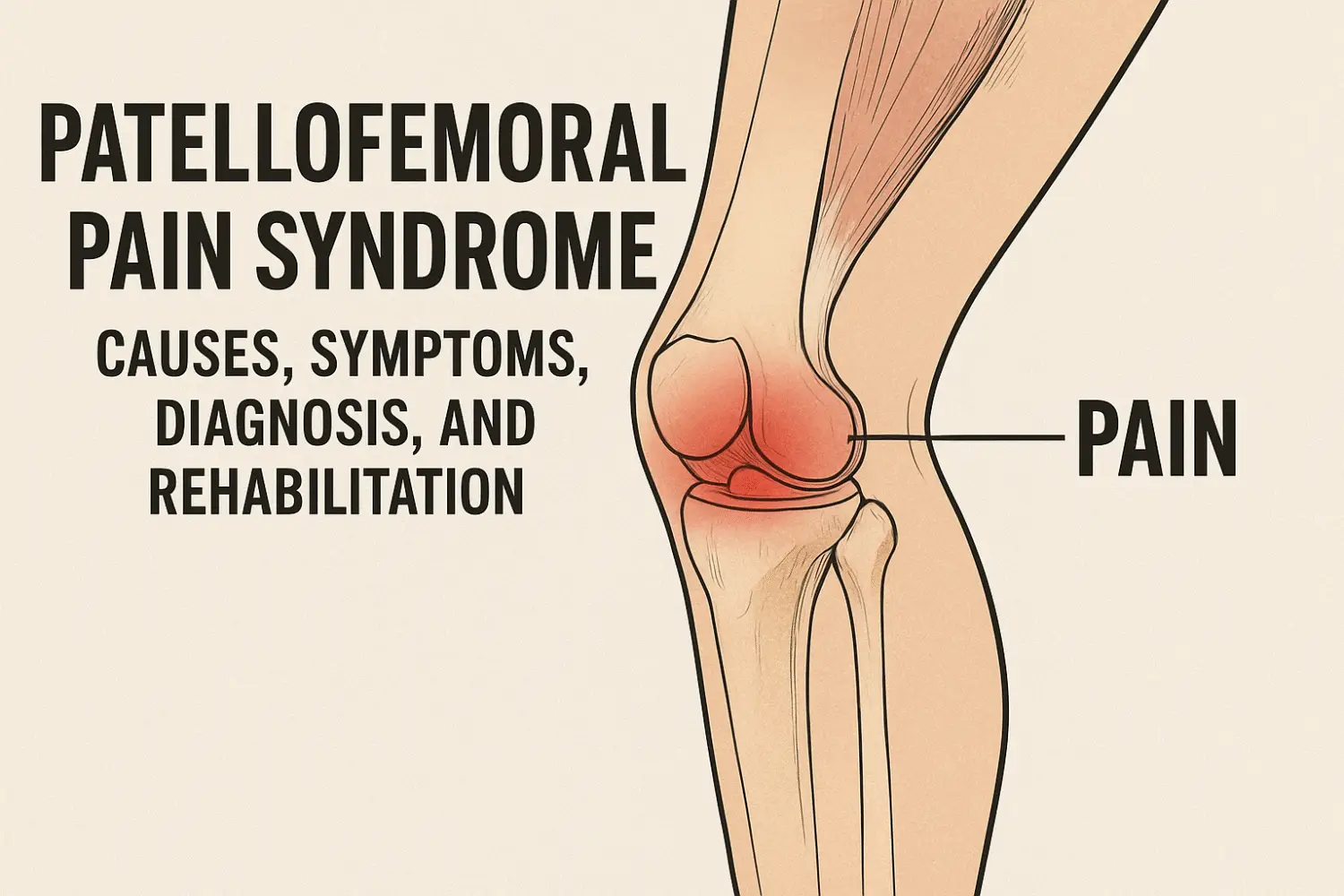What is Patellofemoral Pain Syndrome?
Patellofemoral Pain Syndrome (PFPS) is a common musculoskeletal condition characterized by pain around or behind the kneecap (patella), particularly during activities that involve knee bending, such as climbing stairs, squatting, running, or sitting for prolonged periods. It is often referred to as “runner’s knee” because of its prevalence among athletes, but it can affect anyone, including non-athletes.
PFPS occurs when the patella does not move smoothly within the femoral groove during knee motion, leading to irritation of the surrounding soft tissues. While it is not usually associated with structural damage, it can cause significant discomfort and limit daily activities if not managed properly.
Causes of Patellofemoral Pain Syndrome
The exact cause of PFPS is multifactorial, and it usually results from a combination of biomechanical and muscular factors, including:
- Overuse or Repetitive Stress
Activities like running, jumping, or excessive squatting put continuous stress on the knee joint, irritating the patellofemoral structures. - Poor Patellar Tracking
When the kneecap moves abnormally within the femoral groove, it increases pressure on cartilage and surrounding tissues, causing pain. - Muscle Imbalance or Weakness
Weak quadriceps, particularly the vastus medialis oblique (VMO), and tightness in the iliotibial band or hamstrings can alter patellar alignment. - Foot and Ankle Mechanics
Flat feet (overpronation) or improper footwear can affect knee alignment and contribute to PFPS. - Previous Knee Injury
A history of knee trauma may predispose an individual to PFPS. - Sudden Increase in Physical Activity
Rapid changes in workout intensity or duration without adequate conditioning can overload the knee joint.
Signs and Symptoms
The symptoms of PFPS can vary in intensity but commonly include:
- Anterior Knee Pain – A dull, aching pain around or behind the kneecap.
- Pain During Activity – Discomfort during running, squatting, climbing stairs, or cycling.
- Pain After Prolonged Sitting – Known as the “theater sign,” pain worsens when sitting with knees bent for long periods.
- Crepitus or Grinding Sensation – A feeling of cracking or popping when bending the knee.
- Swelling (Mild) – Occasional puffiness around the knee.
- Increased Pain on Inclines – Activities involving uphill or downhill movement can aggravate symptoms.
Diagnostic Tests for PFPS
PFPS is mainly diagnosed through a clinical assessment that relies on the patient’s history and findings from the physical examination. However, certain tests help confirm the condition:
Clarke’s Test (Patellar Grind Test)
- The examiner applies gentle pressure above the patella while the patient contracts the quadriceps. Pain indicates PFPS.
How it’s done:
- The patient lies supine with the knee extended.
- The examiner applies downward and distal pressure on the superior border of the patella.
- The patient is asked to contract the quadriceps.
- Positive sign: Pain or discomfort in the patellofemoral region during contraction.
Patellar Compression Test
How it’s done: With the knee extended, the examiner presses the patella posteriorly against the femur.
Positive sign: Reproduction of pain behind the patella.
Patellar Apprehension Test
How it’s done: The patient is supine with the knee slightly flexed. The examiner pushes the patella laterally.
Positive sign: The patient resists or shows apprehension (fear of dislocation).
Single-Leg Squat Test
How it’s done: The patient performs a squat on one leg while the examiner observes knee alignment.
Positive sign: Pain in the anterior knee or poor patellar tracking.
Step-Down Test
How it’s done: The patient steps down from a step or box while the clinician observes.
Positive sign: Pain during the movement, often due to increased patellofemoral load.
Key Exercises for patellofemoral pain syndrome:
Stretching of Tight Structures
Tight muscles play a significant role in the development and persistence of Patellofemoral Pain Syndrome (PFPS) because they alter the biomechanics of the knee joint and patellar tracking.
Key Tight Muscles Involved
Quadriceps (especially Rectus Femoris)
- Increased tension in the rectus femoris pulls the patella superiorly and laterally, increasing pressure on the patellofemoral joint.
Iliotibial (IT) Band / Tensor Fasciae Latae (TFL)
- A tight IT band exerts a lateral pull on the patella, contributing to maltracking and lateral tilt.
Hamstrings
- Tight hamstrings limit knee extension and increase posterior tibial translation, altering the patellofemoral contact forces during movement.
Gastrocnemius
- Tight calves can restrict ankle dorsiflexion, leading to compensatory mechanics (like overpronation), which changes knee alignment and increases PF stress





